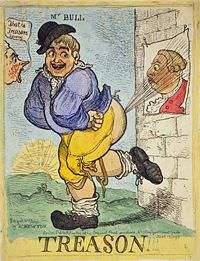The Scare Cycle

I'm not the only one looking back at the brown scares of the past to make sense of the recent frenzy over "extremism." Over at Cliopatria, Chris Bray (an occasional contributor to Reason) draws on Robert Churchill's recent study of the roots of the militia movement, To Shake Their Guns in the Tyrant's Face, to make an important historical point:
Churchill writes that New Deal progressives, offended and frightened by vitriolic far-right opposition to the New Deal, launched "a systematic campaign of public condemnation and state repression." Private liberal organizations "initiated the collection of dossiers on leading figures of the Far Right," while the FDR administration and J. Edgar Hoover's FBI undertook an effort that led to the conviction of dozens of right-wing figures on sedition charges. (Hoover even maintained a "custodial detention index" of right-wing figures.)
Attacking the political right, the political left sawed the floor out from under its own feet. Since "most of those prosecuted during the Brown Scare had not gone beyond the realm of political speech," Churchill concludes, "…at their core these cases involved the suppression of far right political philosophy and the denial of the right of free speech…The institutions and rhetorical tactics of the Brown Scare would come back to haunt the Left after World War II, as a resurgent Republican Party launched a second Red Scare under the leadership of Joseph McCarthy and Richard Nixon."
In the comments to Bray's post, Jonathan Dresner notes that the cycle didn't begin with the brown scare, pointing to the previous red scare of the '20s. It's a good point. Interestingly, there's one major thread connecting the first red scare, the first brown scare, and the second red scare: J. Edgar Hoover played a central role in all three.


Show Comments (29)